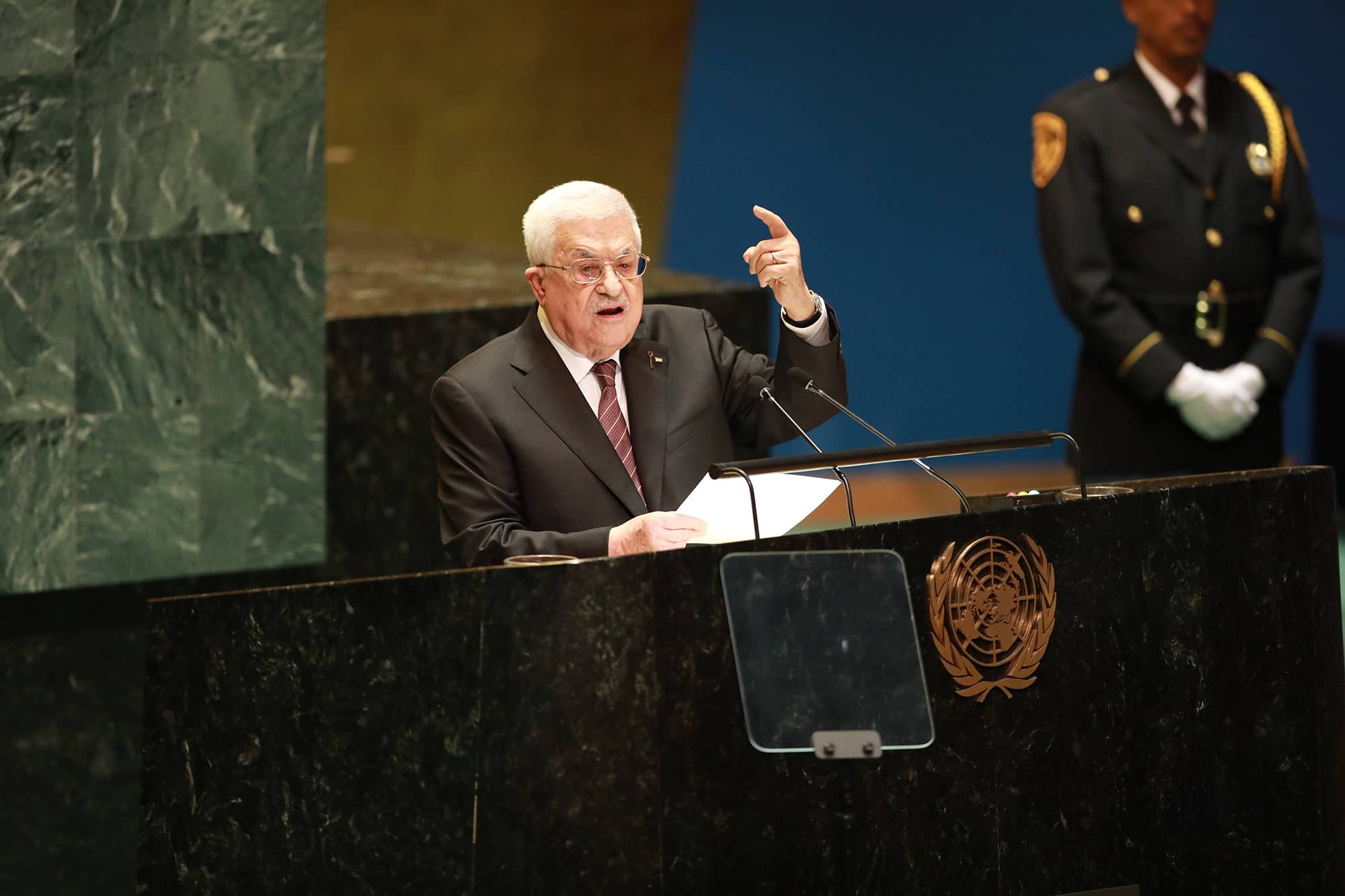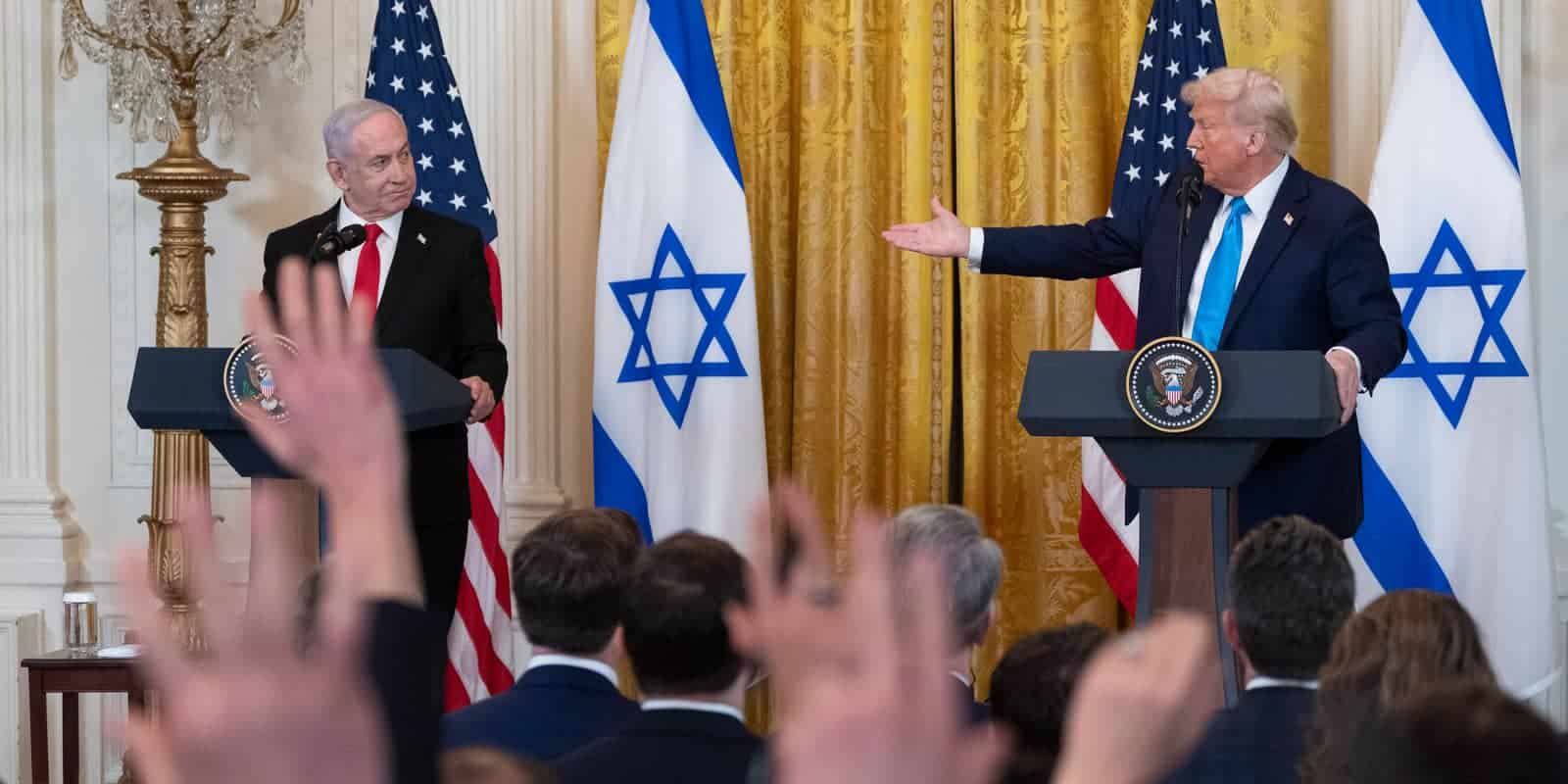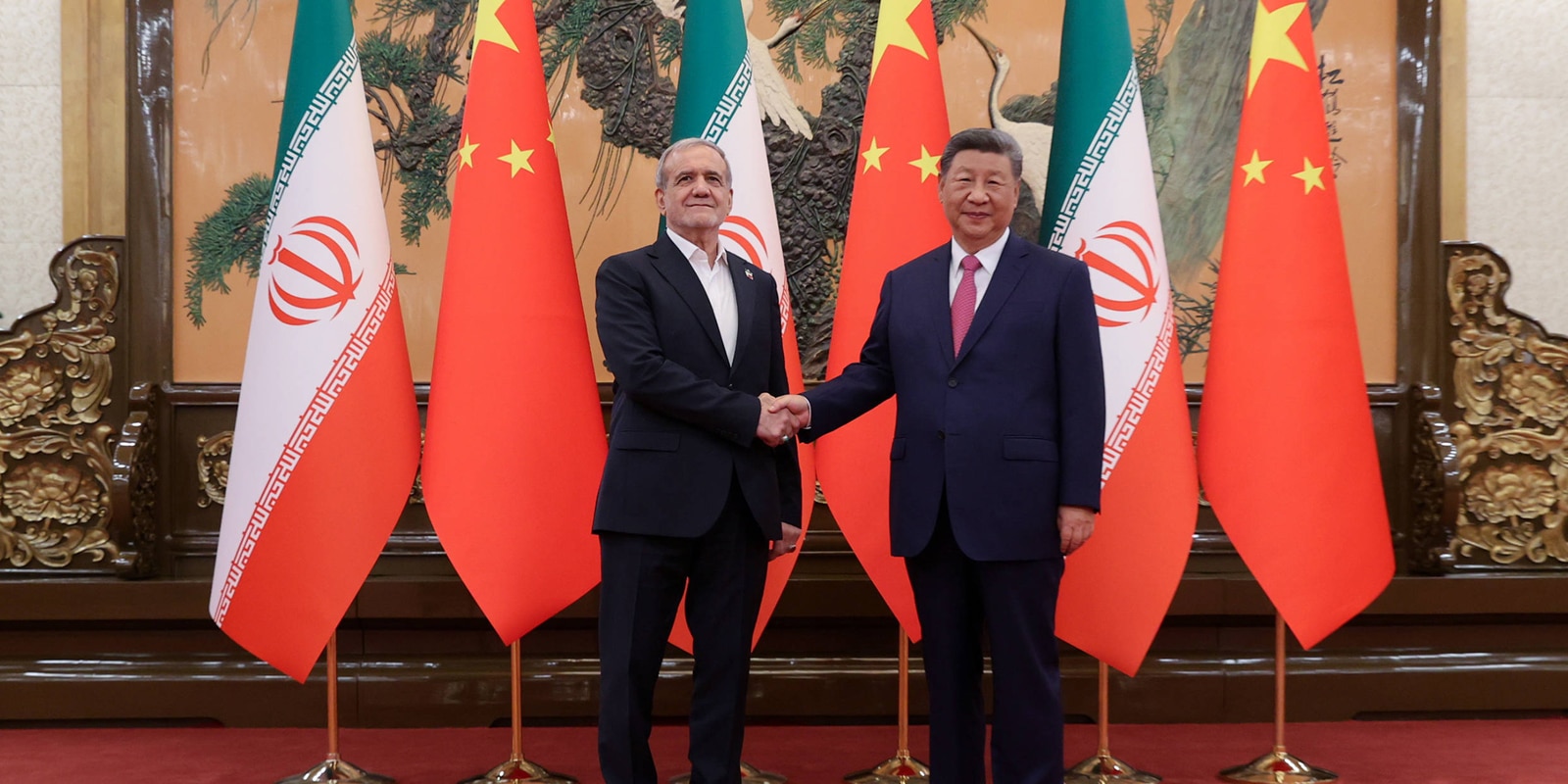The “special relationship” between Israel and the United States—a term coined by President Kennedy in 1962—rests, in principle, on three complementary pillars: shared values, common interests, and support in the political arena (V.I.P.—Values, Interests, Politics). Although cooperation between the United States and Israel has reached new heights under President Trump, the relationship is not free of tensions. Some pertain to managing the struggle over the Middle East’s future and the sense that the United States is deeply involved – down to the finest details – in the effort to secure the Gaza ceasefire and advance its broader goals in the region, while imposing its will on Israel in the process. Others reflect substantive changes now unfolding with respect to each of these pillars—changes that are opening real fissures that need to be mended.
As to values, Israel’s image has suffered significantly among broad segments of the American public, and the traditional foundation of a values-based partnership is further eroding due to political polarization (in the United States and in Israel alike). As to interests, unprecedented partnerships have indeed emerged—both in the campaign against Iran and in U.S.-led moves toward a future arrangement in Gaza—but there are also core issues on which the Trump administration is advancing troubling initiatives, notably its posture toward Turkey and Qatar. In the political arena, the legacy of strong bipartisan support in both houses of Congress is at risk. Within the progressive wing of the Democratic Party (as illustrated by Zohran Mamdani’s successful campaign for the New York mayorship), anti-Israel and anti-Zionist views once confined to a negligible fringe are now aired openly. At the other pole, on the antisemitic margins of the MAGA movement associated with Trump, voices are calling to end support for Israel. Meanwhile, cracks—some a by-product of Israeli policy failures—have also appeared in the American Jewish community’s commitment to Israel.
The architecture of U.S.–Israel cooperation must therefore be rebuilt. It should rest on a renewed battle for hearts and minds across America’s diverse public sphere; on tightening bonds with American Jewry; on cultivating ties with mainstream currents in both parties; and on the deepening interdependence between the two countries’ defense establishments. The goal should be to craft a relationship that reduces Israel’s dependence on American taxpayer’s money while preserving both the American commitment to Israel’s qualitative military edge, and Israel’s diplomatic freedom of action in an arena that will remain fraught with risks—and opportunities.
The Values Pillar: Fissures in an Age of Image Problems and Polarization
During the second and third quarters of 2025, Israel’s standing in American public opinion deteriorated rapidly and even dangerously, as reflected in reliable polling. The orchestrated information campaign about “starvation” and even “genocide” in Gaza— once the mark of left-wing circles and parts of America’s Muslim communities—gained momentum due to the manner in which the realities on the ground were portrayed by many in the traditional media and, even more so, on social networks and in academic discourse. These messages—akin to those that fueled the political campaign against Israel in Europe (as President Trump took care to emphasize to the prime minister)—penetrated broadly, not only among the progressive camp. Thus, they now cast a doubt on the shared values that for more than six decades have formed one of the special relationship’s three pillars—long assumed to be accepted on both sides of the aisle in Washington.
Preserving and restoring this values foundation is made more difficult in part because attitudes toward Israel—or at least toward the current government, as perceived by wide circles in the United States—have gradually, and especially of late, become part of a much broader set of “social” (that is, values-based and even essentially religious) issues that are splitting American society and setting its factions against one another. On values questions there is scarcely a minimal common denominator between the progressive left and the “Trumpist” right—ranging from national symbols and historical memory, to religion’s place in public life, to immigration, gender, and identity—all of which feed, within the progressive “woke” camp, the aggressive pattern of intersectionality.
Within this value system, Palestinians are marked as part of a broad camp of the oppressed—alongside ethnic minorities in the United States, undocumented immigrants, women, LGBTQ persons, and so on (despite the glaring absurdity of “connecting” sympathy for Hamas with demands for gender equality). Jews, unless they adopt an anti-Zionist line, are pre-labeled as “white oppressors” with no place in legitimate discourse, in academia, or online. To be sure, some progressives recoil from unbridled hostility toward Israel; yet at times, statements emerging from Jerusalem’s current government—from coalition figures who knowingly refuse to consider the importance of the values and cognitive dimensions of the relationship with the United States—play into the hands of the radical camp and serve its arguments. The very fact that Zohran Mamdani—whose positions on Israel’s very right to exist are well-known—could be a candidate, let alone elected mayor, in New York, a city still home to the world’s largest Jewish population, attests to the depth of polarization and its influence even on Jewish voters.
At the same time, this intensifying polarization—and the culture of deliberate radicalization fueled by the structure of social media (what Micah Goodman and others have called the “attention industry,” which demands incendiary statements)—also feeds displays of hostility and even open antisemitism among elements of the hard right identified with support for the MAGA movement, Trump’s power base, which has fundamentally reshaped the Republican Party’s social and political orientation. Strident anti-Israel voices such as Representative Marjorie Taylor Greene in the House of Representatives and Tucker Carlson in the media are part of this trend, though it is worth noting that Trump attacked Carlson in harsh terms for the latter’s stance against military action in Iran.
Meeting—and Friction—Points Between (Trump-Era) American and Israeli Interests
Alongside the complexities—putting it mildly—of the values dimension of the relationship, Israel and the United States have, since June 2025, arrived at a series of intense and unprecedented meeting points in national interests as interpreted by decision-makers in Jerusalem and Washington. Varied, indeed sometimes winding paths led to these junctions, with all that this entails.
It is important to emphasize at the outset that Trump is not an “isolationist” in the traditional sense. He and his team—as the (newly titled) Secretary of War Pete Hegseth made clear in his address to America’s military leadership—do not seek a return to the interwar reality when, as Kissinger liked to recall, the U.S. Army was smaller than Bulgaria’s and America stood aside as Europe and Asia slid into the abyss. Today, despite unbridled criticism of his predecessors’ policies—including in Iraq and Afghanistan—Trump aims to preserve America’s stature as the world’s leading military power and to counter China’s impressive rise.
Moreover, alongside Trump’s—partly justified—self-congratulation on his diplomatic achievements (he now counts eight wars he claims to have helped end: Russia and Ukraine, though there he has yet to reach a breakthrough; Pakistan and India; Egypt and Ethiopia; Thailand and Cambodia; Azerbaijan and Armenia; Congo and Rwanda; Iran and Israel; and even the “great peace” between Israel and Hamas…), he does not hesitate to threaten the use of force, and has prepared the public for the possibility that he might do so, specifically against drug cartels and America’s enemies in Latin America.
That said, the considerations driving Trump to threaten and employ force do not stem from a values-based mission of democratization in the neo-conservative mold of George W. Bush, nor from a commitment to uphold a “rules-based” world order as under George H. W. Bush, Barack Obama, and especially Joe Biden. The administration’s approach is fundamentally “businesslike”— focused on what directly serves U.S. interests (and for that matter, the president’s personal interests)—a posture we may term “Transactional Internationalism.”
These principles have led to the junctions where U.S. aims and policy met Israel’s, creating combinations without precedent in the history of the bilateral relationship:
- “The Road to Fordow” and other nuclear targets in Iran (Operation Midnight Hammer): Trump’s view—developed already in his first term—of Iran’s nuclear project as a threat that should never have been allowed to mature under any agreement, combined with U.S. military capabilities (specifically U.S. Central Command, CENTCOM, which since 2021 has worked in close cooperation with Israel) and the Israeli Air Force’s shutdown of Iran’s air-defense capabilities, all led him to a decision of far-reaching consequence: to join, directly and in force, an Israeli military operation and complete it where Israeli capabilities fell short. This willingness to push back against explicit isolationist voices (such as Carlson, as noted above) and to cross the threshold into direct action recalls, to some extent, Truman’s 1947 decision to commit to the fight against Soviet proxies (inter alia in, the Greek civil war). Common to both presidents (despite extreme differences in their social outlook) is not only their tendency to use blunt language, but also the understanding that America faces a global enemy. Today the strategic alignment of China, Russia, Iran, and North Korea—some use the acronym CRINK—is the primary challenge, and in the Trump administration’s view, striking its weak link, Iran, is a strategic move of the first order (his lesson from the failed attempt to negotiate with Kim Jong Un is that there is no point in locking the barn after the nuclear horse has bolted). On this point he found common language with Israel—without this preventing him from moving forcefully to end the fighting once he judged the main objective had been achieved.
- “The Road to Kiryat Gat” (and the creation of the CMCC). As with the decision to strike Iran, the Gaza file saw a rapid shift from mediation to direct, large-scale U.S. involvement in managing Gaza’s “day after”—more than two hundred American military personnel (albeit with no boots on the ground inside Gaza—just as the Iran intervention was also “surgical”). Trump and his envoys—Steve Witkoff and Jared Kushner—constructed a complex process leveraging Arab and Muslim states—Saudi Arabia and the UAE, Egypt and Jordan, Indonesia (members of the “camp of stability” in the Arab-Muslim world), alongside Turkey and Qatar (supporters of Hamas and the Muslim Brotherhood), and Pakistan, whose relations with the United States are improving despite its support for terror actors in India—to generate leverage (pressure? embrace?) on Hamas. In parallel, the United States positioned itself as the actor that “brought” Israel to agree to the 20-point framework—even if, in practice, the latter was shaped over time and at a high level of coordination among Israel, the United Arab Emirates, and administration figures. At its core, the plan meets key Israeli demands: the return of the living hostages and most of the bodies of slain Israeli captives (with Hamas dragging its feet on returning the remaining bodies); a clear stipulation that Hamas must disarm and hand over civilian governance in Gaza; and a reality in which, during the transition, the IDF continues to control more than half the territory and the crossings into the territory. All this points to an attentiveness by the president and his team to what they view not only as legitimate Israeli requirements but as keys to a stable, long-term arrangement. Still, the framework comes with costs for Israel:
- The CMCC in Kiryat Gat. The process led to the establishment in Israel, in an empty industrial facility in Kiryat Gat, of a U.S.-run coordination and liaison headquarters (formally, the Civil-Military Coordination Center, CMCC). It is commanded by the head of CENTCOM’s Army component, Lt. Gen. Patrick Frank, with U.S. Ambassador to Yemen Steven Fagin appointed as civilian coordinator. Alongside the roughly 200-person U.S. component are officers and soldiers from Britain, France, and even Spain (not among Israel’s European friends). Despite the commitment to close coordination with the IDF—represented by Deputy Chief of Staff Maj. Gen. Tamir Yadai and Maj. Gen. Yaakov (Yaki) Dolf, who oversee day-to-day ties with the CMCC—the image that has formed, reinforced by visits to the facility by Vice President J. D. Vance and Secretary of State Marco Rubio, as well as the Chairman of the Joint Chiefs of Staff General Dan Caine and the Director of National Intelligence, Tulsi Gabbard, is one of an unprecedented American “takeover” of a core aspect of Israel’s national security.
- Turkey and Qatar in “phase two.” Even more significant in the long term is the administration’s stance on Turkey and Qatar’s role in the plan’s “second phase.” It appears that a veto by Turkey’s president, Recep Tayyip Erdoğan, effectively prevented the prime minister’s participation in the leaders’ gathering (which Trump archly announced as a “peace conference”) in Sharm el-Sheikh. The favorable posture of the president and his senior envoys—perhaps not free of personal motives—toward Erdoğan and toward Qatar confronts Israel with a fundamental difficulty. Not that long ago, the United States treated Muslim Brotherhood supporters with suspicion, and the Biden administration viewed Erdoğan as an authoritarian, non-democratic ruler (and did not invite him to the virtual “Summits for Democracy” it convened twice during Biden’s term). But in an era of “transactional” foreign policy, such value-based constraints have been lifted, and the president personally bestows warm expressions of support on Turkey and Qatar. This poses a challenge not only for Israel but also for other members of the regional “camp of stability” (including Greece and Cyprus), who view with growing concern both Erdoğan’s neo-Ottomanism and Qatar’s blunt use of its financial power.
- The CMCC in Kiryat Gat. The process led to the establishment in Israel, in an empty industrial facility in Kiryat Gat, of a U.S.-run coordination and liaison headquarters (formally, the Civil-Military Coordination Center, CMCC). It is commanded by the head of CENTCOM’s Army component, Lt. Gen. Patrick Frank, with U.S. Ambassador to Yemen Steven Fagin appointed as civilian coordinator. Alongside the roughly 200-person U.S. component are officers and soldiers from Britain, France, and even Spain (not among Israel’s European friends). Despite the commitment to close coordination with the IDF—represented by Deputy Chief of Staff Maj. Gen. Tamir Yadai and Maj. Gen. Yaakov (Yaki) Dolf, who oversee day-to-day ties with the CMCC—the image that has formed, reinforced by visits to the facility by Vice President J. D. Vance and Secretary of State Marco Rubio, as well as the Chairman of the Joint Chiefs of Staff General Dan Caine and the Director of National Intelligence, Tulsi Gabbard, is one of an unprecedented American “takeover” of a core aspect of Israel’s national security.
- “The Road to Damascus”[1] and turning a (former?) jihadist into a U.S. protégé. Turkey and Qatar’s influence on U.S. policy—and specifically on the views of the ambassador in Ankara, Tom Barrack, personally very close to the president—is evident at another complex meeting point of U.S. and Israeli policy that also produced unprecedented developments, in this case in the diplomatic sphere: ministerial-level meetings between Israel and Syria with U.S. involvement, and an effort to reach a broad security arrangement between the two states (and possibly even more far-reaching steps). Again, alongside advantages, the administration’s approach—blithely ignoring the past of Ahmed al-Sharaa (better known in his rebel leader persona as Abu Mohammad al-Julani), a committed jihadist with ties to al-Qaeda—carries significant costs from Israel’s perspective. First and foremost are the implications for minorities in a “new” Syria—especially the Druze, whose protection Israel is committed to; and the Kurds, who played a crucial role in halting ISIS and hold positive views of Israel. These concerns figure both in the security negotiations with Syria and in the complex dialogue with the Trump administration over the region’s future. The picture is less complicated in Lebanon, where the United States (like Saudi Arabia and the UAE) fully supports Israel’s demand—now also enshrined by Lebanese government’s decisions—that Hezbollah be disarmed. Still, Washington’s inclination—as reflected in contacts with envoy Morgan Ortagus—is toward greater patience with the current Lebanese government’s difficulties.
Bottom line: the Trump administration assesses American interests in the regional system with different tools—more economic and practical—than its predecessors, and Israel must adapt to this worldview and demonstrate, in deeds, its strategic value. In this context, tightening operational ties with the U.S. military creates opportunities to embed Israel’s core positions—but at times also imposes new constraints on the IDF’s freedom of action.
Meanwhile, the administration’s attitude toward states and regimes openly hostile to Israel—and sympathetic to Hamas and Islamism—requires building a response (however cautious and calculated) in the American political arena. In this regard, Senator Ted Cruz’s legislative initiative to designate the Muslim Brotherhood a terrorist organization and to limit its ability to operate in the United States is of particular importance.
Mounting Challenges in the American Political Arena
Until recently there was still reason to believe that the ability of Israel’s friends to drive legislation of this kind through Congress remained unchallenged, despite the public mood described above and despite deepening partisan rifts. This was due in part to the strength of AIPAC, the principal pro-Israel lobby, which in the last two election cycles formed, contrary to its past practice, a Political Action Committee (PAC) that funds favored candidates and contributes to campaigns against those who publicly take anti-Israel positions. This move met with near-complete success in both 2022 and 2024 and, in other circumstances, would have deterred political actors from taking a hostile stance.
Yet “even the mighty cedars can burn.” Israel’s current problem is not only the stance of campus demonstrators, radical left academics, and the small but extreme progressive cohort in Congress (the Squad, almost all women, led by Alexandria Ocasio-Cortez), who were hostile to Israel even before the war. During the course of the war, and especially in fall 2025, several pillars of the Democratic Party—including Jews and others identified for decades with consistent support for Israel—shifted to a path of escalating criticism, up to and including calls to cut back aid to Israel.
Senator Bernie Sanders has long been sharply critical; but when Senate Minority Leader Chuck Schumer—a Jew and a staunch friend of the Jewish State—called for a change of leadership in Israel in March 2024, a crack seemed to have opened up in a central pillar of bipartisan support. In early September 2025, Representative Jerry Nadler—one of Israel’s veteran supporters in the House—announced he would not seek reelection and that he favors an arms embargo on Israel in light of its Gaza policy, a sign of a dramatic erosion of Israel’s standing among Democrats and within American Jewry. In October, Representative Seth Moulton of Massachusetts—a prominent member of the Armed Services Committee who is traditionally supportive of Israel and is running for the Senate in 2026—launched a fierce attack on both the Israeli government and AIPAC. The circle of House Democrats supporting limits on security assistance to Israel has expanded from a few individuals to dozens. All this is happening as America’s political divide deepens and a budget standoff has left much of the federal government partially shut down.
There are three fundamental reasons for the political damage to Israel’s standing among Democrats —and Israel’s leadership must take them into account even as it openly places its hopes in President Trump and his positions:
- Foremost is the damage to Israel’s image among the Democratic base. In the United States—and even more so in Europe—this trend intensified beginning in March 2025, centered largely around the issue of “starvation.” Paradoxically, the collapse in support for Israel emerged when the fighting was less intense and took a lower civilian toll than in the war’s first months, when Israel still enjoyed public and congressional backing. The shift stems largely from questions raised about Israel’s intentions and motives—linked to ideas, voiced by President Trump early in his term, about depopulating the Gaza Strip.
- Another factor exacerbating tensions between Democrats and the current Israeli government is indeed its strong identification with Trump. This may be understandable given wartime circumstances, and in light of the president’s adamant desire to be shown respect—but it remains highly problematic in the eyes of a broad camp that abhors him, his ways, and his values. The recent widespread protests under the slogan “No Kings” reflect a real fear among wide circles (and not only the clearly defined progressive left) of damage to the foundations of American democracy, including potential use of military force in major cities, and echo tensions in Israeli society over similar concerns (which, at the time, were explicitly addressed by President Joe Biden). As described above, political polarization sharpens Democratic discomfort with an Israeli leadership—and public mood—where Israeli attitudes verge on adulation of the president.
- At a deeper level, there is great significance to the widening fissure—perhaps better described as a rift—that has emerged between much of American Jewry and Israel (as they perceive it today). Most American Jews belong to non-Orthodox denominations that, on a range of practical and symbolic issues (such as the failed effort to establish an egalitarian prayer plaza at the Western Wall), encounter marginalization or even scorn in Israel’s political sphere. For years, the government of Israel has been sawing off the very branch on which it sits. This—together with the two reasons above—has had a direct impact on the reality in New York, where only a few courageous voices in these communities (such as Rabbi Ammiel Hirsch of the Stephen Wise Free Synagogue) spoke out forcefully against the candidacy of a radical anti-Zionist Muslim for mayor—a candidacy that until recently would have been unthinkable.
All this comes as some Republicans also adopt worrying positions: some out of explicit or implicit antisemitism; others due to principled, isolationist-tinged opposition to foreign aid in all its forms. In certain circumstances, practical convergence between them and the progressive left could impede legislative moves that Israel and its friends seek to advance.
What Can Be Done?
Some of the problematic trends described here stem from wartime circumstances and may ease and even dissipate, particularly if Trump’s “eternal peace” endures and attention shifts to implementing the plan’s second phase—where Israel will have scope to show goodwill and rebut “genocide” claims. Even so, the fissures outlined above in each pillar of the special relationship—values, interests and politics—began to appear before October 7, 2023, and demand attention at the highest policy level.
At the administrative level, Israel needs a dedicated national coordination body for U.S. relations in all their facets, preferably within the National Security Council, which is better suited than the Ministry for Strategic Affairs (whose current head effectively serves as liaison to the administration) to assess the full range of inputs (defense, intelligence, diplomacy, economics, public affairs, and those relating to the Jewish community), integrate them, and chart a balanced and consistent policy.
At the level of national policy, the emerging shifts in the foundations of the special relationship require rethinking Israel’s approach to the United States, anchored in the following principles:
- Highlighting Israel’s contribution to advancing U.S. strategic interests against adversaries who also cooperate against Israel. Israel’s standing with the United States, and even more with the Trump administration and its “transactional” traits, derives first and foremost from Israeli strength. The pathways described above (to Fordow, Kiryat Gat, Damascus) were paved—in different respects—by Israel’s use of military force against Iran, Hamas, and Hezbollah. The willingness and ability to employ force to reshape the regional balance created the conditions for the diplomatic gains the president takes pride in.
- At the same time, as the prime minister has noted repeatedly, the time has come—through a gradual process coordinated with the administration and the congressional mainstream in both chambers—to chart a course from the current military aid framework (and its successor in the coming decade) to a model of collaboration in cutting-edge military technologies that benefit both sides. This should be done while preserving the U.S. commitment to Israel’s Qualitative Military Edge (QME) over any hostile force configuration, and alongside recognition that a country with per-capita GDP higher than that of both Germany and Japan can meet its defense requirements through domestic production in some cases (which is what the prime minister was alluding to with his “super-Sparta” concept) and through joint ventures in others.
- Israel should further adopt a systematic policy of deepening the already developing links between the two countries’ military and intelligence establishments (which, among other advantages, maintain functional continuity during political transitions).
- Israel can continue to benefit from the security-strategic ties built in recent decades—“under the table” or openly—with key Arab states, especially Saudi Arabia and the United Arab Emirates, which can serve in Washington as counterweights to Turkish and Qatari influence.
- Difficult as it may be in the current climate to restrain an ambitious, aggressive administration, Israel must—especially regarding the administration’s and the president’s personal stance toward regional actors clearly identified with the Muslim Brotherhood and supportive of Hamas—renew efforts to restore the traditional congressional anchor on both sides of the aisle. Israel must not forfeit Democratic support—or at least the support of most mainstream Democrats; and, as noted, seasoned Republicans in the Senate (such as Lindsey Graham and Ted Cruz) are willing to lead initiatives against the Muslim Brotherhood and its supporters.
- All this must be accompanied by a fundamental shift in Israel’s conduct toward American Jewry, with greater attentiveness to positions that will shape future attitudes toward Israel; by increased investment in engaging younger generations confronting far-reaching challenges on campus; and by putting to rest the notion that Israel deliberately ignores most components of North American Jewry and pins its hopes on evangelical support. The road connecting the two main parts of the Jewish people in the twenty-first century must be a two-way street.
[1] Obviously not used here in its original Christian sense
JISS Policy Papers are published through the generosity of the Greg Rosshandler Family.















Disarm Hamas or Face a Partitioned Gaza